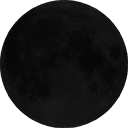
Strong Mourning and White-Winged Populations Forecast for Dove Season
AUSTIN — A rainy spring and early summer led to a good nesting season through most of the state and near record high populations of mourning and white-wing doves across large portions of Texas. Hunters could encounter significantly increased dove populations in the field when the 2024 season opens Sept. 1.
Spring population surveys conducted by Texas Parks and Wildlife Department (TPWD) staff found an estimated 34.3 million mourning doves in Texas, the third highest estimated population in survey history. White-winged dove populations have increased four percent, becoming the new record high with an estimated 12.8 million this year.
“Given the conditions and the number of birds, as long as the weather holds this month, hunters should expect a very good early season throughout most of the state,” said Owen Fitzsimmons, TPWD Webless Migratory Game Bird Program Leader. “Summer rains should also result in a good late crop of native forbs (weeds and flowering plants) seeding out just in time for some late season hunting for anyone still chasing doves after September.”
With food and water still plentiful on the landscape, birds may be scattered in some areas, though as the August heat creates dryer conditions, hunters may still find larger concentrations of birds at watering holes. Doves typically feed and water twice a day, so patterning where doves are going throughout the day is the best recipe for success. Hunters should look for doves feeding in and around agricultural fields, or look for stands of common sunflower, croton and other native annual forbs and grasses. In areas with thick vegetation, hunters should be extra diligent about marking birds they hit and spend extra time looking for downed birds, as necessary.
Texas is home to seven species of native doves and pigeons, including the three legal game species- mourning, white-winged and white-tipped doves. Texas accounts for 30 percent of the total mourning doves and 85 percent of the total white-winged doves harvested in the U.S. each year, far more than any other state.
TPWD officials remind hunters to prepare for the heat and make sure they are packing all the essentials for a day in the field. They should bring plenty of water to stay hydrated and take measures to stay cool in a shaded area. The same is true for canine hunting partners, be sure to have plenty of water for them and make sure they don’t overheat early in the season.
The regular dove seasons:
- North Zone: Sept. 1-Nov. 10, resuming Dec. 20, 2024 – Jan. 7, 2025
- Central Zone: Sept. 1-Oct. 27, resuming Dec. 13, 2024 – Jan. 14, 2025
- South Zone: Sept. 14-Oct. 27, resuming Dec. 13, 2024 – Jan. 21, 2025
For the third straight year, there will be six Special White-Winged Dove Days and hunters should be aware of the changes in date this year:
- Sunday, Sept. 1 – Monday, Sept. 2
- Friday, Sept. 6 — Sunday, Sept. 8
- Friday, Sept. 13.
Starting on Sept. 14, the aggregated bag limit in South Zone’s regular season is 15 with no more than two white-tipped doves. During the Special White-winged Dove Days in the South Zone, hunting is allowed only from noon to sunset and the daily bag limit is 15 birds, to include not more than two mourning doves and two white-tipped doves.
All updated hunting regulations for this year’s hunting season can be found in the Texas Outdoor Annual mobile app or online at OutdoorAnnual.com.
In addition to a hunting license, anyone born after Sept. 1, 1971, must successfully complete a hunter education training course to hunt legally in Texas. The TPWD Hunter Education certification is valid for life and is honored in all other states and provinces. Hunters can find more information or print a replacement at no cost online.
Hunters must also have a Migratory Game Bird Endorsement (Stamp) and Harvest Information Program (HIP) certification to hunt dove. HIP certification involves a brief survey of previous year’s migratory bird hunting success and is conducted at the time licenses are purchased. Lack of certification and the endorsement stamp rank as the two most common hunting violations during dove season.






